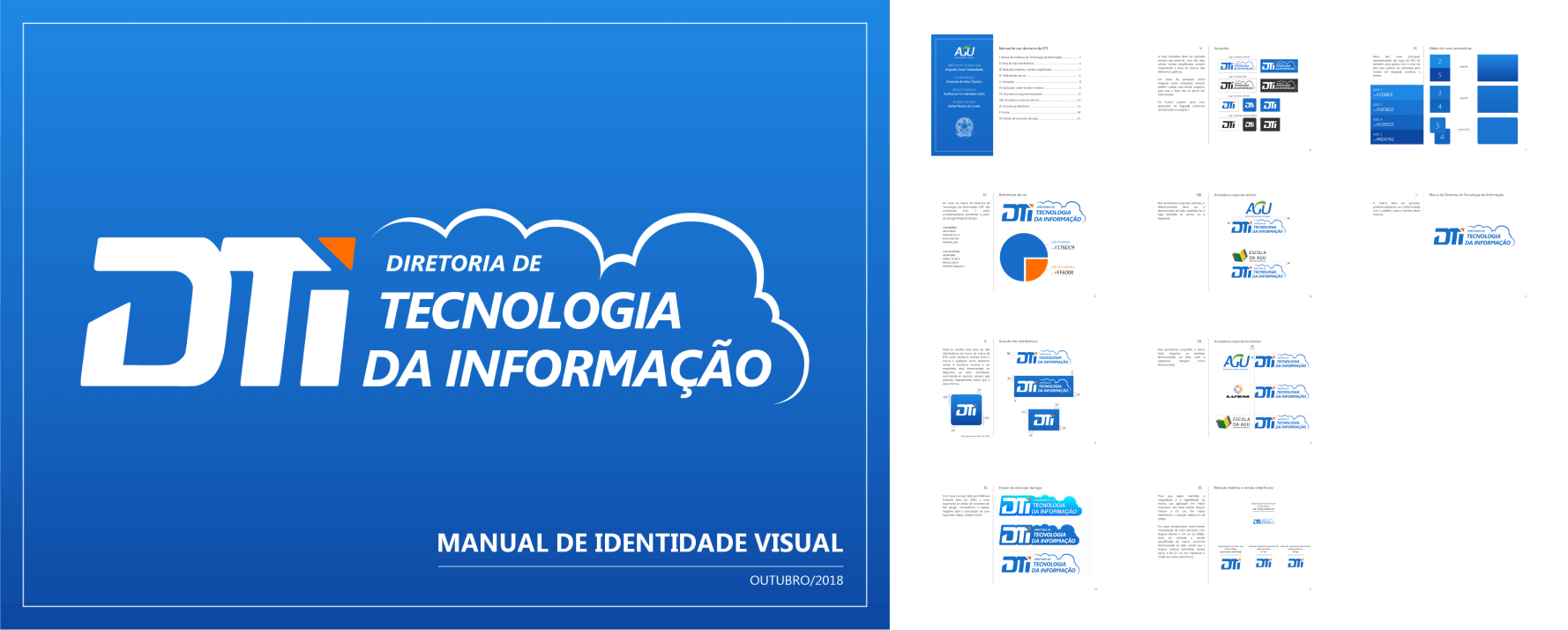Advocacia-Geral da União.
Projects for Advocacia-Geral da União
Senior Software Engineer at First Decision
December 2023 – Present
- Led the development and integration of innovative Frontend solutions using React.js, Next.js 14, MUI, Zod, and TypeScript, enhancing user experience and streamlining web development processes.
- Architected data-fetching and caching layers with TanStack Query to optimize API interactions and performance.
- Managed GitLab projects using Rancher and SonarQube, integrating CI/CD pipelines and employing SonarQube for code quality analysis. Provided strategic guidance and support on project organization and utilization within GitLab.
- Collaborated with back-end (Nest.js, OracleDB) and design (Figma) teams to deliver scalable UI components.
- Key Project: Novo Promoção, where a nationwide legal promotions platform for Brazil's Attorney-General's Office (AGU) was rebuilt, replacing a .NET legacy system. The UI was engineered in Next.js, React, TypeScript, and TanStack Query to handle complex business rules and high loads, delivering an accessible, performant interface adopted across federal legal departments.
- Stack: Next.js 14-16, React.js, TypeScript, MUI, TanStack Query, Zod, React-Hook-Form (RHF), ESLint, SonarQube, CI pipelines, Nest.js, OracleDB, Figma, Git, GitLab, Docker, Rancher, SonarLint, DBeaver, C#.
HarpIA
HarpIA is an automated ETL (Extract, Transform, Load) system developed for the Advocacia-Geral da União (AGU) in partnership with the Brazilian Federal Court of Accounts (TCU). Delivered in December 2025, it facilitates the secure, internal sharing of relevant legal process data, acting as a critical gateway for the Harpia ecosystem.
- Architecture & Design: Built on the DMOT (Data Model, Orchestrator, Transformer) architecture to ensure modularity and maintainability. Implements an Anti-Corruption Layer (ACL) to safeguard internal databases from external API changes.
- High Performance: Leverages Python's asynchronous capabilities (asyncio, aiohttp) to execute hundreds of concurrent requests, reducing data extraction times from hours to minutes.
- Orchestration & Reliability: Orchestrated by Apache Airflow on Oracle Cloud, ensuring robust scheduling, retries, and monitoring. Features strict data validation with Pydantic and idempotent loading strategies to guarantee data integrity.
- Stack: Python 3.10+, Apache Airflow, Oracle Cloud, SQLAlchemy, Pydantic, aiohttp, Poetry, Docker.

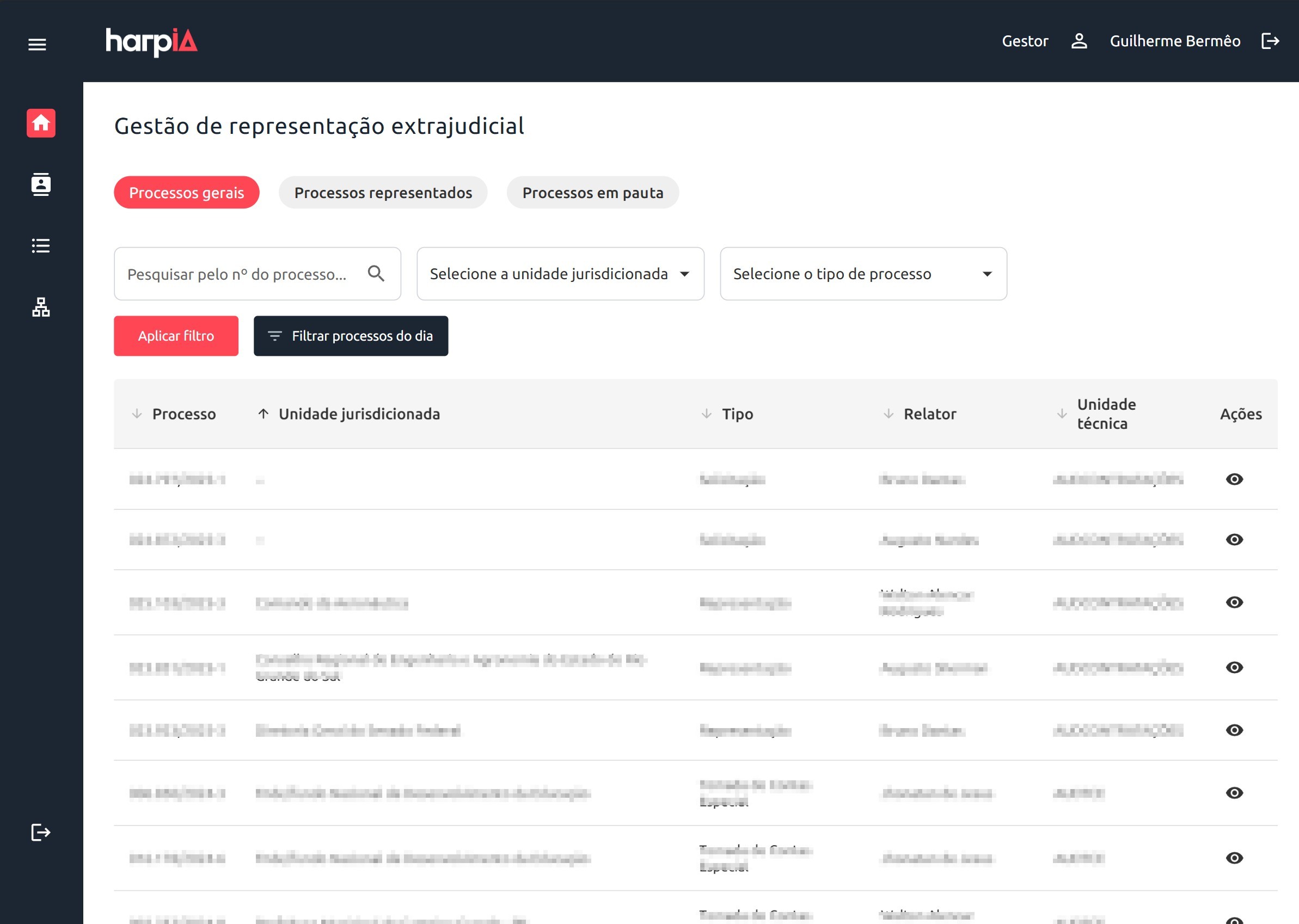
Novo Promoção
Led the rebuild of a nationwide legal promotions platform for Brazil's Attorney-General's Office (AGU), replacing an existing .NET legacy system. Engineered the UI using Next.js 14, React, TypeScript, and TanStack Query to handle complex business rules and high loads. The project delivered an accessible and high-performing interface that has been adopted across various federal legal departments. The role involved architecting data-fetching and caching layers for optimized API interactions and performance, enforcing code quality with ESLint rules and SonarQube scans, and utilizing automated CI pipelines. Collaborated with back-end (Nest.js, OracleDB) and design (Figma) teams to deliver scalable UI components.

UNIO Component Library
-
Description: Co-authored and served as one of the main coordinators for the creation of a React component library based on the UNIO Design System. This library was developed to standardize the visual appearance of systems delivered by the coordination, utilizing Next.js 14 (with subsequent migration to Next.js 15, based on user input) and MUI (@mui/material 5) (with subsequent migration to @mui/material 7, based on user input). The library is published via a private npm registry, enabling its use across all coordination projects through npm/yarn with a GitLab authorization token. It includes interactive Storybook documentation for comprehensive component usage and guidelines. This project exemplifies efforts to optimize Frontend deployment with Next.js by configuring standalone builds and Dockerfiles.
-
Stack: React, Next.js 14 (and Next.js 15, based on user input), TypeScript, MUI (@mui/material 5 and MUI 7, based on user input), React Hook Form, npm private registry, GitLab, Storybook.
Senior Frontend Engineer at TTY2000
April 2023 - November 2024
- Developed and integrated modern Frontend architectures using React.js, Next.js 13, MUI, TypeScript, and Tailwind CSS, boosting site performance and maintainability.
- Revamped legacy PHP Frontends into modular React components, refactoring HTML and CSS code adhering to Clean Code principles, which improved maintainability and performance.
- Leveraged Docker and Nest.js for efficient project management and deployment, containerizing services and integrating Nest.js microservices for data processing.
- Key Project: Programa de Gestão e Desempenho (PGD) (2023–2024) for AGU, a web application enabling public servants to access and manage work activities, including remote work, meetings, and performance goals. Co-developed the system with React, Next.js, TypeScript, and TanStack Query, delivering features for goal-setting, progress tracking, and automated feedback. This system's adoption was studied in an FGV PhD thesis. The application is user-friendly, scalable, adaptable, and accessible for various AGU departments, with a responsive design built using MUI 5 components and a Nest.js/Node.js backend for LDAP user authentication and seamless Oracle database interaction.
- Stack: React, Next.js 13, MUI 5, TypeScript, TanStack Query, Node.js, Nest.js, Docker, Rancher, SonarQube, HTML, CSS, JavaScript, Git, GitLab, OracleDB, Azure DevOps, Zod, Cypress.
Programa de Gestão e Desempenho (PGD) / Programa de Gestão (2.5)
The Advocacia-Geral da União (AGU) sought to improve the quality of life, productivity, and efficiency of technical-administrative public servants in response to the challenges and transformations caused by the COVID-19 pandemic. The goal was to establish a flexible work program offering presential, hybrid, and home office options. The PGD is a new management tool, with significant advancements from 2022 onwards, aimed at modernizing public administration by shifting from process control to results-oriented performance.
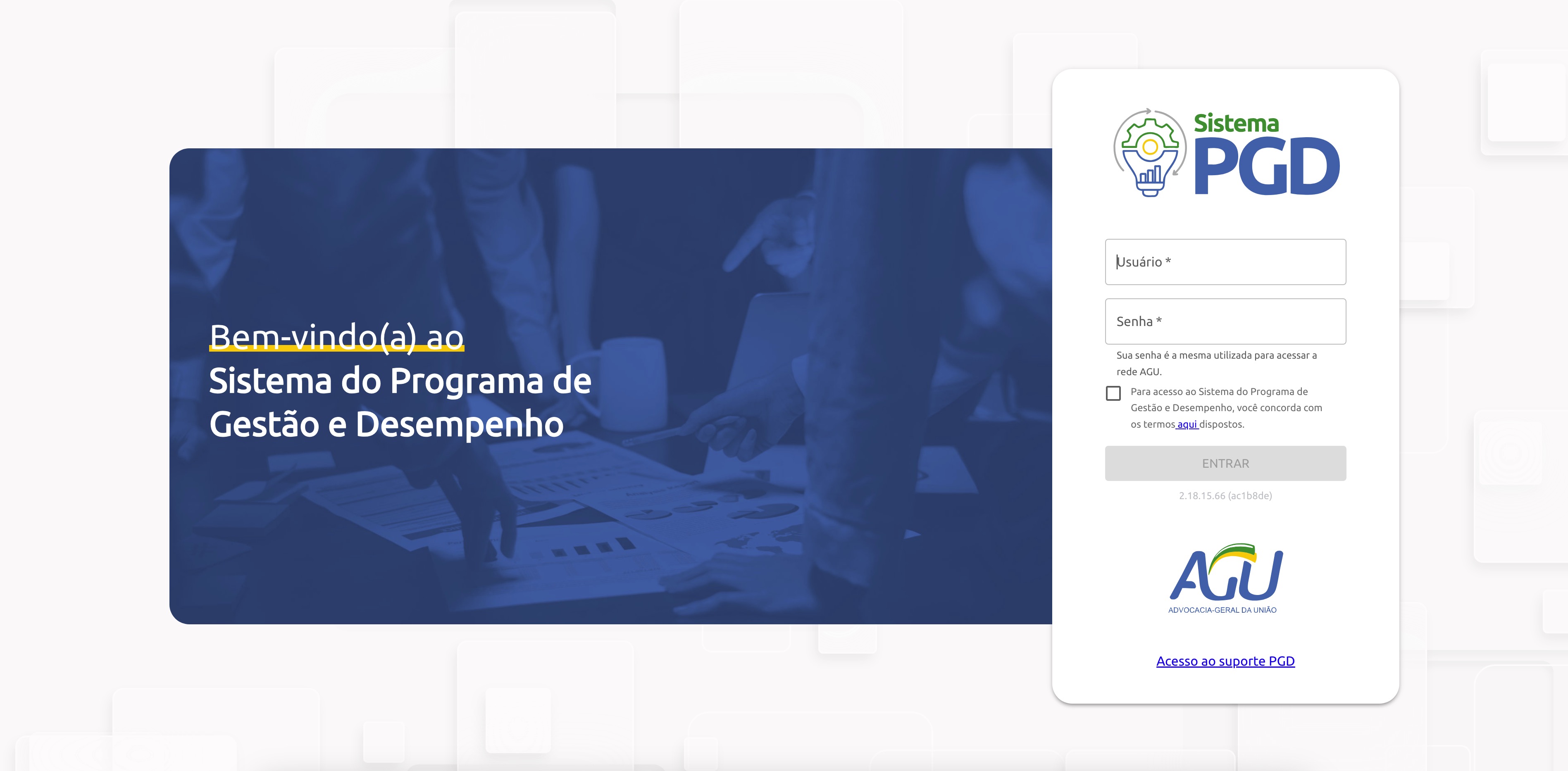
-
Task: The team was tasked with co-developing a comprehensive management application to facilitate the implementation of the Programa de Gestão. This application needed to be user-friendly, scalable, adaptable to future changes, and accessible across various AGU departments.
-
Action: Co-developed the PGD system using React.js (Next.js 13 with app directory) for the Frontend, with a MUI 5 interface, and Node.js (Nest.js) for the back-end. This web application enabled program participants to access and manage their work activities, including remote work, meetings, and performance goals. The responsive design, built with MUI 5 components, ensured a smooth user experience. The Nest.js and Node.js backend managed LDAP user authentication and provided RESTful APIs for seamless interaction with the Oracle database. Utilized TypeScript, TanStack Query, Docker, Rancher, and SonarQube for efficient development, deployment, and code quality. This project was part of a broader effort to rewrite AGU's 48 legacy systems on a single platform.
-
Result: The Programa de Gestão successfully enhanced the quality of life and well-being for AGU public servants while optimizing the use of public resources. AGU reported high productivity and quality in work deliveries since the program's implementation. The PGD has proven to be an effective tool for flexible work options, meeting both administration and public servant needs. Its adoption and impact on server motivation were studied in an FGV PhD thesis, which confirmed that both extrinsic and intrinsic factors of the PGD significantly influence server motivation, with intrinsic factors having a greater effect, and the overall motivation level of PGD participants being high. Flexibility and autonomy provided by the PGD were highlighted as key motivators.
UX Designer & Frontend Engineer at TTY2000
September 2022 - April 2023
- Built interactive components and implemented robust Frontend solutions using React, Next.js 13, MUI 5, TypeScript, Tailwind CSS, and React-Hook-Form for enterprise applications, ensuring optimal user experience.
- Collaborated on projects using Next.js 13 and MUI 5, as well as C# using Blazor, SASS, and MudBlazor development, applying advanced UX design techniques to create user-friendly interfaces.
- Managed deployments and microservices orchestration with Docker, Rancher, and Azure DevOps.
- Key Project: AGU.Legis, a system designed to consolidate publications from electronic service bulletins and the Diário Oficial da União (DOU). Built using Blazor, C#, and Bootstrap, it offers a user-friendly, accessible, and transparent experience, streamlining daily work and promoting public transparency by providing access to the latest acts and regulations.
- Stack: Blazor, C#, Bootstrap, HTML, CSS, JavaScript, User Experience, Git, TypeScript, SASS, Tailwind CSS, Azure DevOps.
AGU.Legis
AGU needed a centralized and easily accessible repository for administrative and regulatory acts to improve information access, enhance transparency, and optimize daily work for its members, employees, and collaborators. The existing landscape included numerous legacy systems.
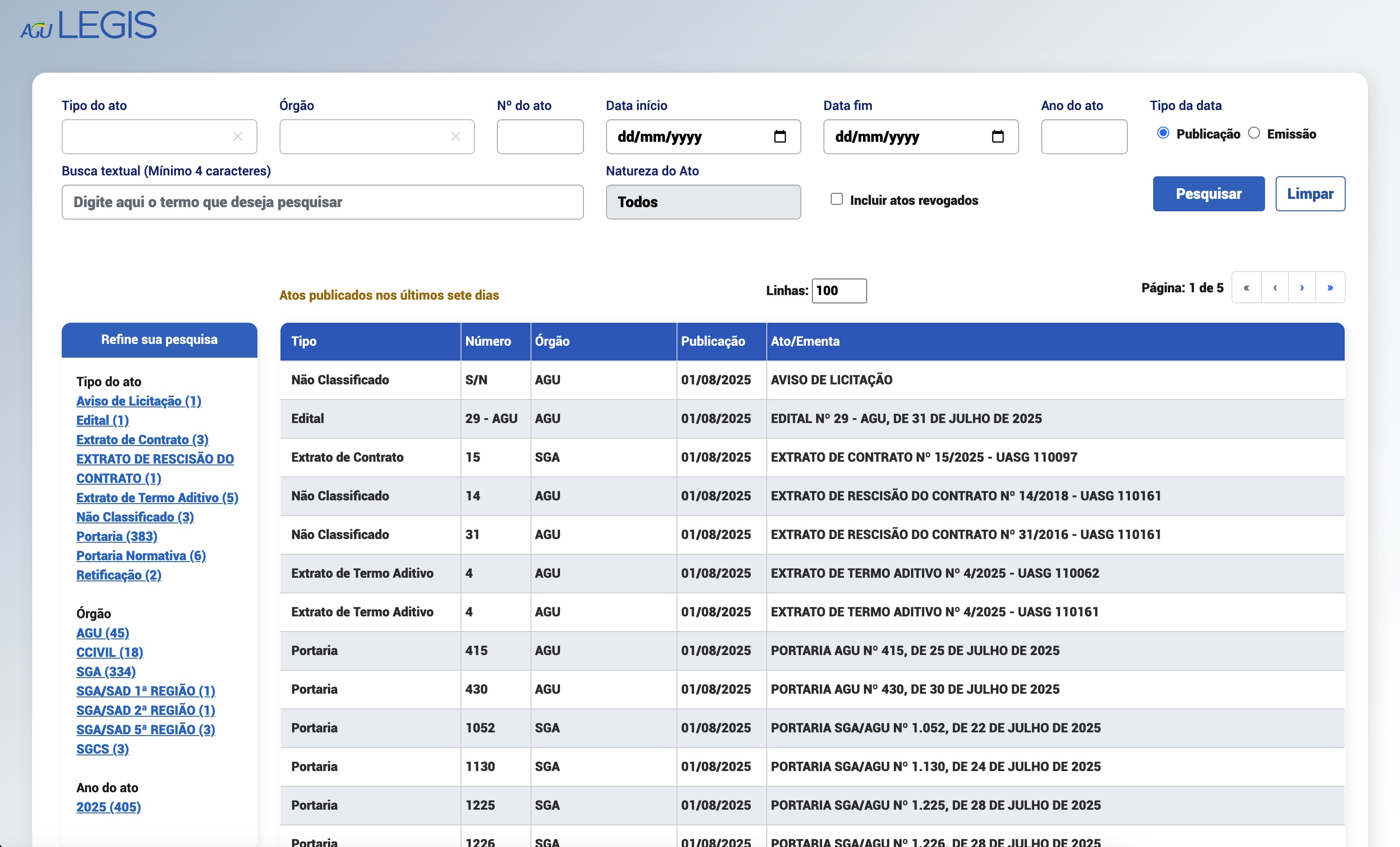
-
Task: Develop a comprehensive and user-friendly system that would automatically update with new publications and ensure users had access to the most up-to-date information.
-
Action: Built AGU.Legis using Blazor, C#, and Bootstrap for the Frontend, providing an intuitive platform for users to search and filter acts by various categories (type, originating body, numbers, year, nature) and keywords. The system automatically displays publications from the last seven days and is accessible on multiple electronic devices. It incorporates modern technologies and refactored HTML and CSS code. The project adhered to Clean Code principles.
-
Result: AGU.Legis successfully optimized the work of AGU members, employees, and collaborators by consolidating essential daily publications into a single virtual environment. The platform ensures retrieved acts are up-to-date, including revocations or amendments. Accessible 24/7 and adhering to Decree No. 10,139/2019 transparency requirements, it became an indispensable tool for enhancing AGU's operational efficiency and public trust.
Frontend Engineer at Advocacia-Geral da União
January 2022 - September 2022
-
Engineered responsive and accessible Frontend solutions for internal legacy government systems (2000s-era) using HTML5, JavaScript/TypeScript, and Tailwind CSS, enhancing user experience.
-
Utilized CSS frameworks like Bootstrap, Tailwind CSS, and Bulma, and introduced React and Vue.js components to modernize interfaces and enhance user workflows.
-
Ensured cross-browser compatibility and accessibility compliance (WCAG 2.1). Managed Git repositories and ensured smooth releases through coordinated cross-team workflows.
-
Key Project: Escola da AGU Mobile App, a mobile and desktop app developed with Microsoft Power Apps. Initially a high-fidelity prototype, its functionality and MySQL database integration led to its adoption as the final product. The app facilitates access to events, courses, and lectures for AGU's 11,000 members, and by 2021, it had 4,000 active users and 500 daily simultaneous accesses, receiving positive coverage in specialized media.
-
Key Project: SAD.Atende, a highly customizable Customer Service Management platform built on the open-source OTRS system using PHP and JavaScript, with a Frontend designed with pure CSS and Bootstrap. It offers 261 unique images for services, ensuring a visually captivating interface.
-
Stack: Microsoft Power Apps, MySQL, HTML, JavaScript, TypeScript, Tailwind CSS, Bootstrap, Bulma, React, Vue, Angular, SASS, C#, PHP, JavaScript, CSS, Bootstrap, HTML, User Experience, Git, TypeScript, Tailwind CSS, Blazor, C#.
Escola da AGU Mobile App
In 2020, there was a need to create a mobile and desktop application to support AGU's 11,000 members in registering for events, courses, and lectures, streamlining and enhancing their user experience with the organization's educational offerings.
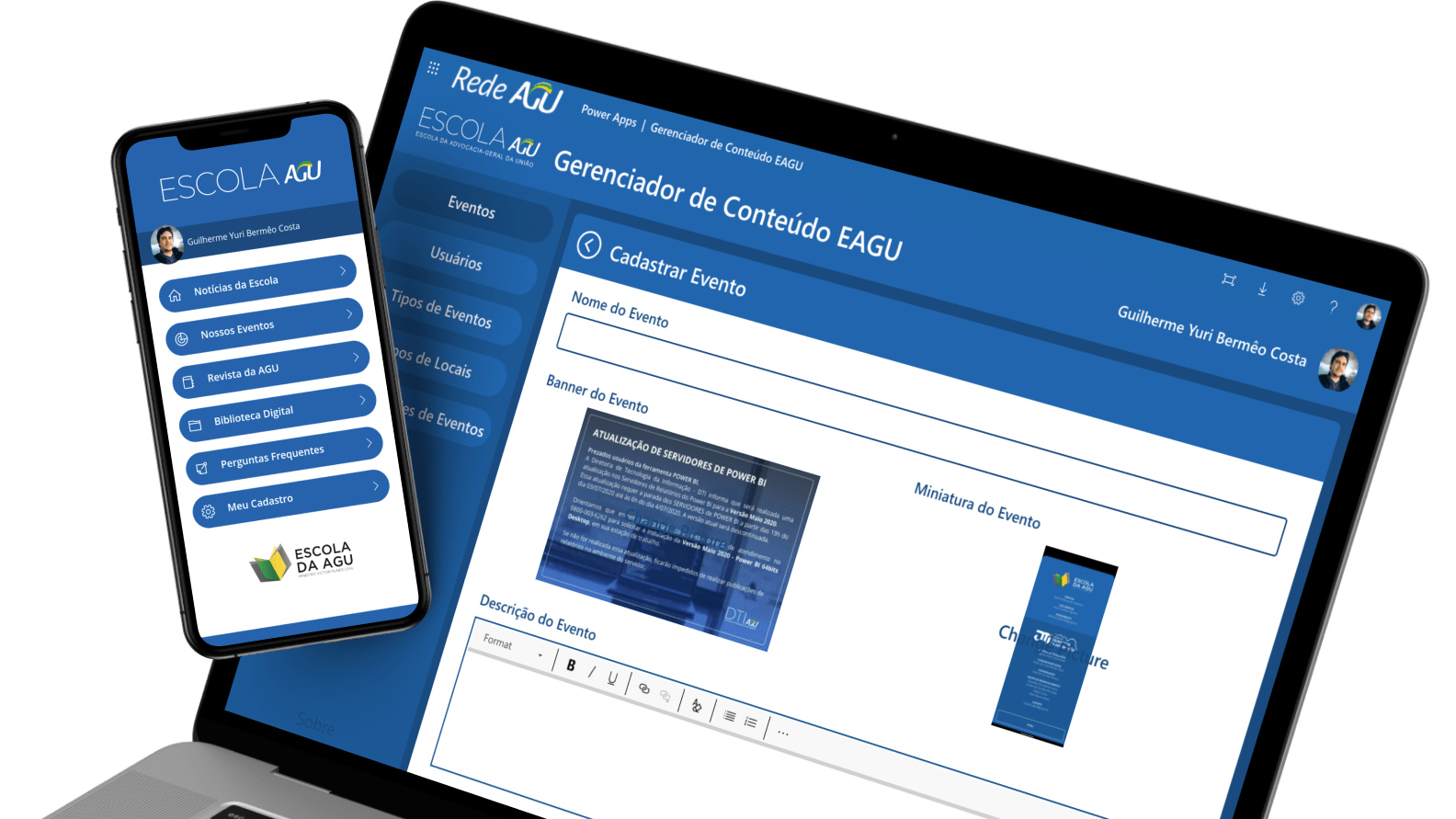
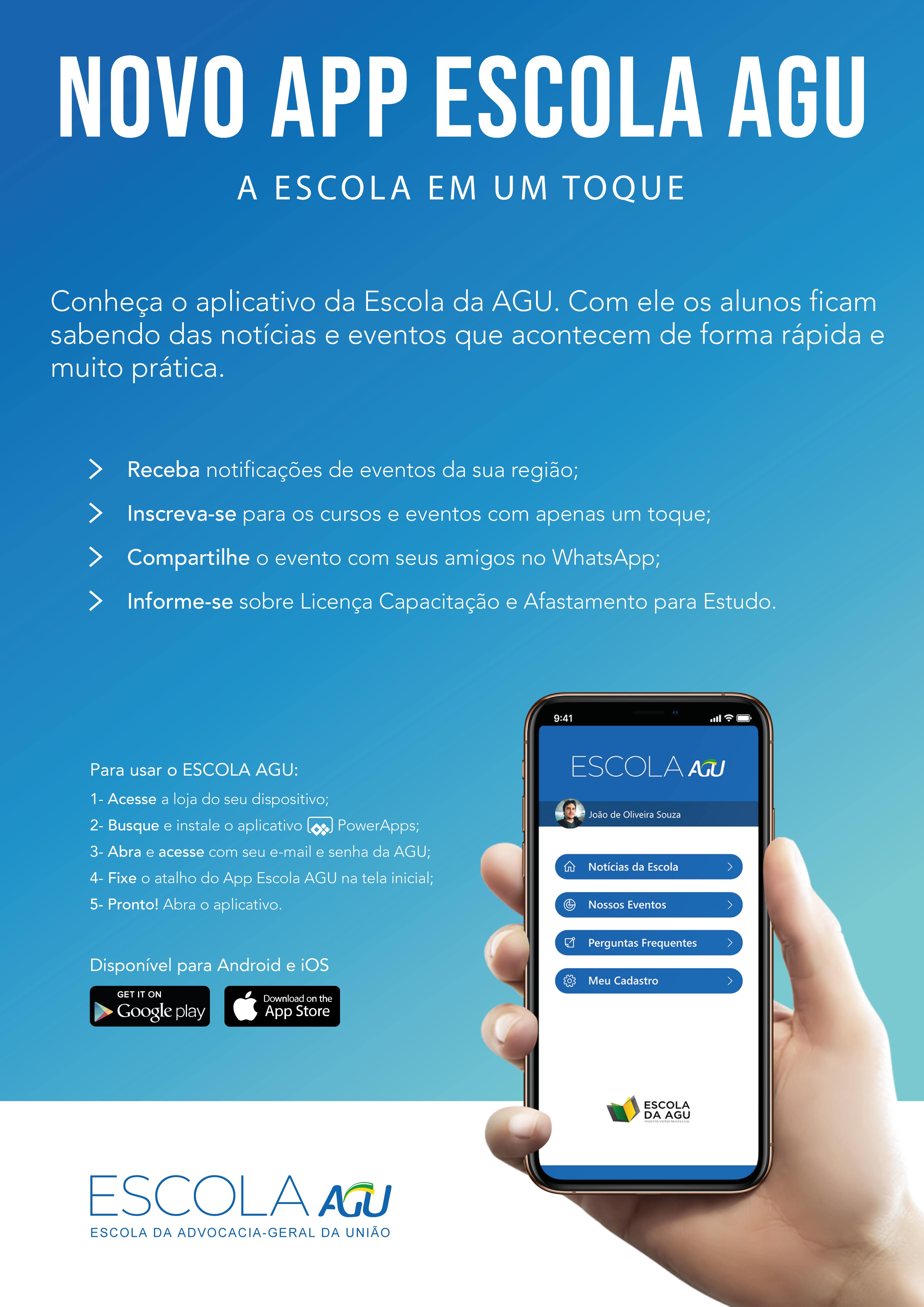
-
Task: Design a high-fidelity prototype for a future React Native app, with the primary goal of enabling easy access and engagement with educational activities for a large user base.
-
Action: Developed a high-fidelity prototype using Microsoft Power Apps, which was initially intended as a stepping stone for a React Native app. The prototype was seamlessly connected to a MySQL database for real-time information access. Implemented views and filtering techniques to optimize app performance and support the substantial user base. Collaborated with the Project Owner to transition the prototype into the final application, eliminating the need for additional React Native development. Ensured the app was compatible with iOS and Android systems.
-
Result: The "App Escola da AGU" was successfully launched and received coverage in specialized media. By 2021, the app had 4,000 active users and approximately 500 simultaneous daily accesses, demonstrating its success in engaging AGU members and streamlining access to educational opportunities. The app transformed the relationship between the institution and its users, making event registration and information dissemination more efficient and agile. It facilitated direct access to events and courses, with reminders and constant updates, aligning with technological trends.
SAD.Atende
Co-developed the Frontend of SAD.Atende, a powerful and highly customizable Customer Service Management platform built on the open-source OTRS system. The Frontend was designed with pure CSS and Bootstrap, using PHP and JavaScript for development. The platform features a collection of 261 unique images, one for each service, to ensure a visually captivating and easily identifiable interface. This attention to detail elevates the platform's overall user experience, allowing for seamless navigation and efficient management of customer service interactions. It was built with scalability and adaptability in mind and can be tailored to the specific requirements of any organization. In a two-person team, responsibilities included Frontend development, making 261 unique images to work around base system limitations.
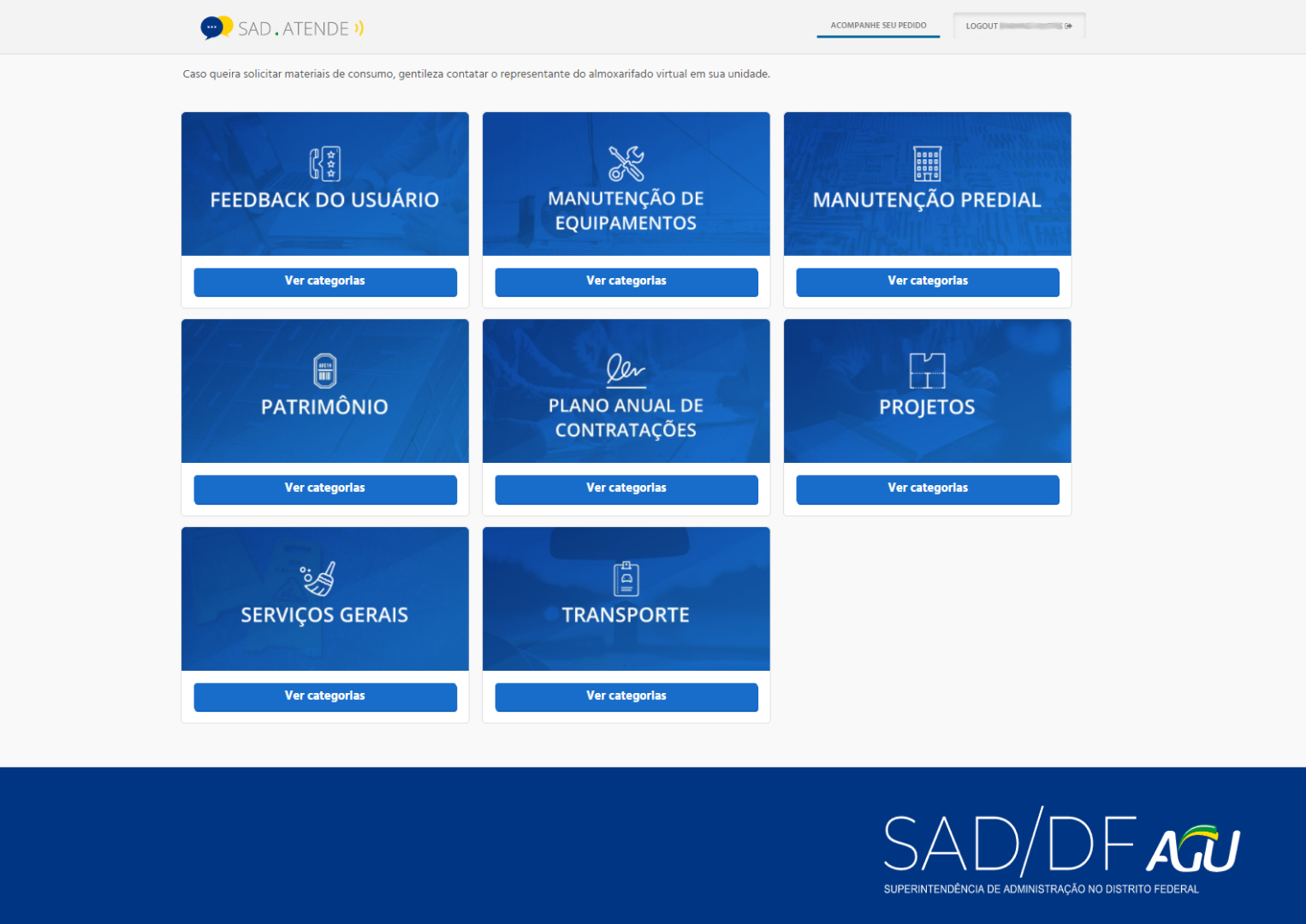
Senior UX Designer at Advocacia-Geral da União
September 2018 - January 2022
- Conceptualized and designed high-fidelity web interfaces, focusing on user experience and ensuring consistency and accessibility across governmental platforms.
- Led SCRUM teams, analyzed functional and non-functional requirements, and enhanced the user interface of internal governmental software.
- Developed a Microsoft PowerApps-based mobile events app for courses and events taught by the "Escola da Advocacia-Geral da União," serving over 1,000 users. This app facilitated direct access to events and courses with constant reminders and updates, aligning with technological trends.
- Key Project: AGU.Visitas (Visitors Management System), designed to replace a legacy ASP system. This involved high-fidelity prototyping in Microsoft PowerApps using a MySQL database, and rigorous end-user testing. Acted as the Scrum Master, overseeing the program flowchart and database schema design, and developing the Frontend with PHP and Bootstrap. The system incorporated advanced features like facial recognition.
- Key Project: Brand Book DTI / AGU, defining a comprehensive style guideline and design system for the Technology core of the General Advocacy of the Union and the new logo of the Information Technology Directorate, leveraging Google Material Design best practices.
- Stack: Adobe Creative Suite, Figma, Adobe XD, and Microsoft PowerApps for design and prototyping, creating innovative and engaging content. Collaborated with developers to integrate designs into production, maintaining visual consistency. Microsoft PowerApps, MySQL, PHP, Bootstrap, Axure RP, Figma, Adobe Creative Suite, Adobe XD, SharePoint, HTML, CSS, User Experience, Git, Figma, Adobe XD, Adobe Illustrator, Adobe InDesign, Microsoft PowerApps, Microsoft Flow, Adobe Photoshop, Bootstrap, HTML, CSS, User Experience, Git, Design, Logo Design, Creative Content Creation, Web Content Creation.
UNIO Design System
The Advocacia-Geral da União (AGU) maintained approximately 48 internal systems, predominantly legacy systems using ASP source code dating back to the 2000s, which resulted in a fragmented and inconsistent User Interface (UI) across their digital landscape. A strategic, long-term project named "Unio" was initiated to systematically rewrite and consolidate these disparate systems onto a singular, unified platform, leveraging the existing SAPIENS infrastructure.
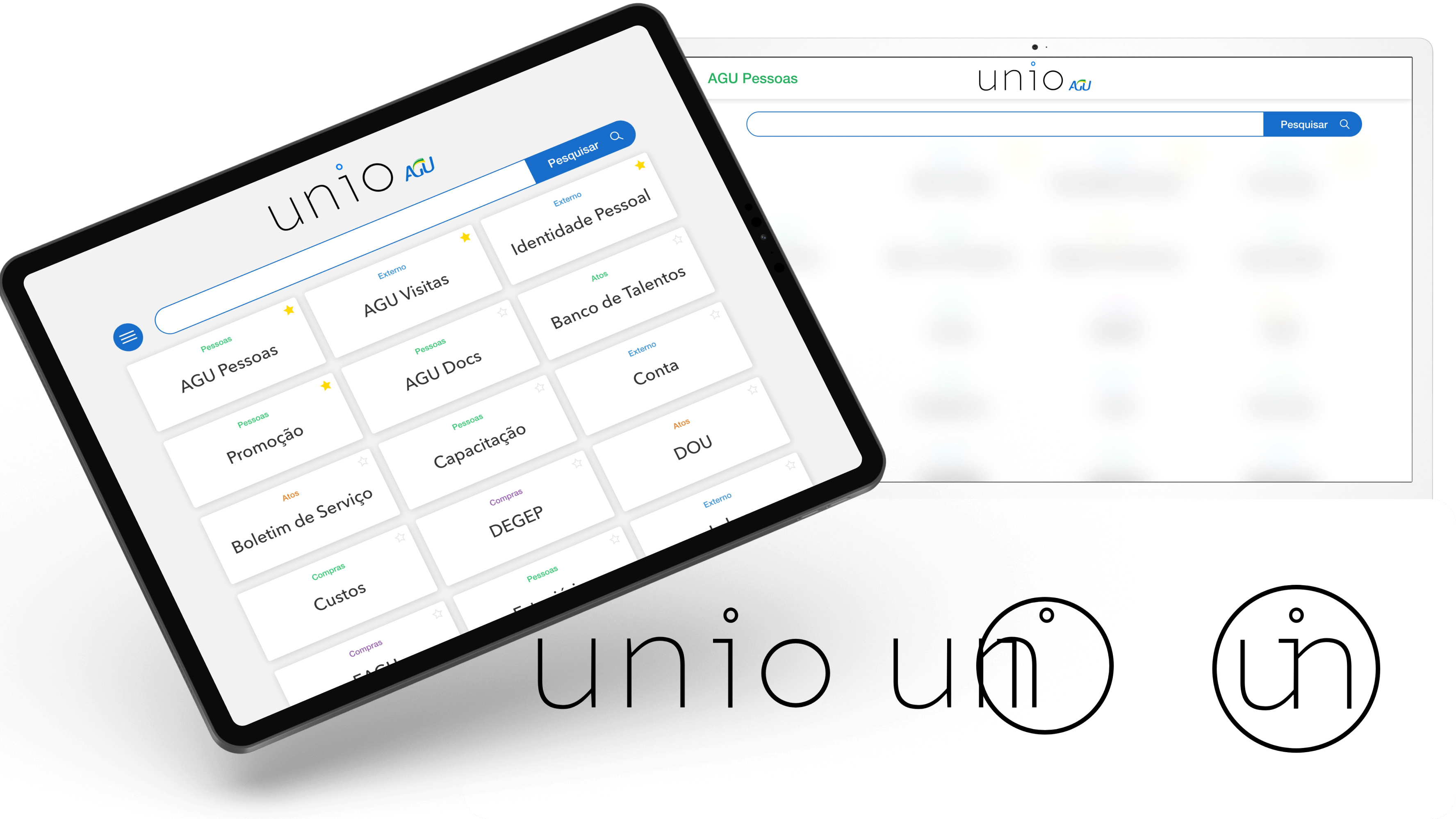
-
Task: As a Senior UX Designer, I was responsible for conceiving the initial idea and developing the foundational visual designs for the UNIO Design System. The primary objective was to standardize the User Interface (UI) of AGU's diverse systems, ensuring a cohesive and efficient user experience across all applications. This encompassed the conceptualization and design of visually appealing and consistent web interfaces.
-
Action: I developed the initial visual concepts and created high-fidelity prototypes for the UNIO Design System. My work involved extensive use of Figma and Adobe XD for design and prototyping. Additionally, I leveraged expertise with other tools from the Adobe Creative Suite, such as Adobe Illustrator and Adobe InDesign, to create comprehensive design assets and ensure visual consistency. I also managed SCRUM teams and performed Frontend modifications to improve UI in governmental software. I collaborated closely with development teams to ensure seamless integration of designs into the development process.
-
Result: My foundational contributions were instrumental in establishing a consistent UI/UX design system at AGU. This design system included the development of a React component library called
@agu/unio, specifically designed for the UNIO Design System. This initiative laid the groundwork for modernizing AGU's administrative systems, ultimately providing a more unified and streamlined user experience across its extensive internal software ecosystem.
AGU.Visitas
The outdated ASP-based legacy Visitors Management System required a complete overhaul to modernize its features and improve overall performance.
-
Task: As part of a three-developer SCRUM team, the task was to create a new, efficient Visitors Management System focusing on enhancing user experience and incorporating advanced features like facial recognition. Also acted as Scrum Master, defining the program flowchart and database schema.
-
Action: Developed a high-fidelity prototype using Microsoft PowerApps and a MySQL database which underwent end-user testing for optimal performance. Subsequently, developed the Frontend using PHP and Bootstrap.
Brand Book DTI / AGU
Developed a comprehensive style guideline and design system for the Technology core of the General Advocacy of the Union and the new logo of the Information Technology Directorate. This project leveraged Google Material Design's best practices to standardize development projects, enhance usability, and ensure a consistent visual identity across all digital platforms.
